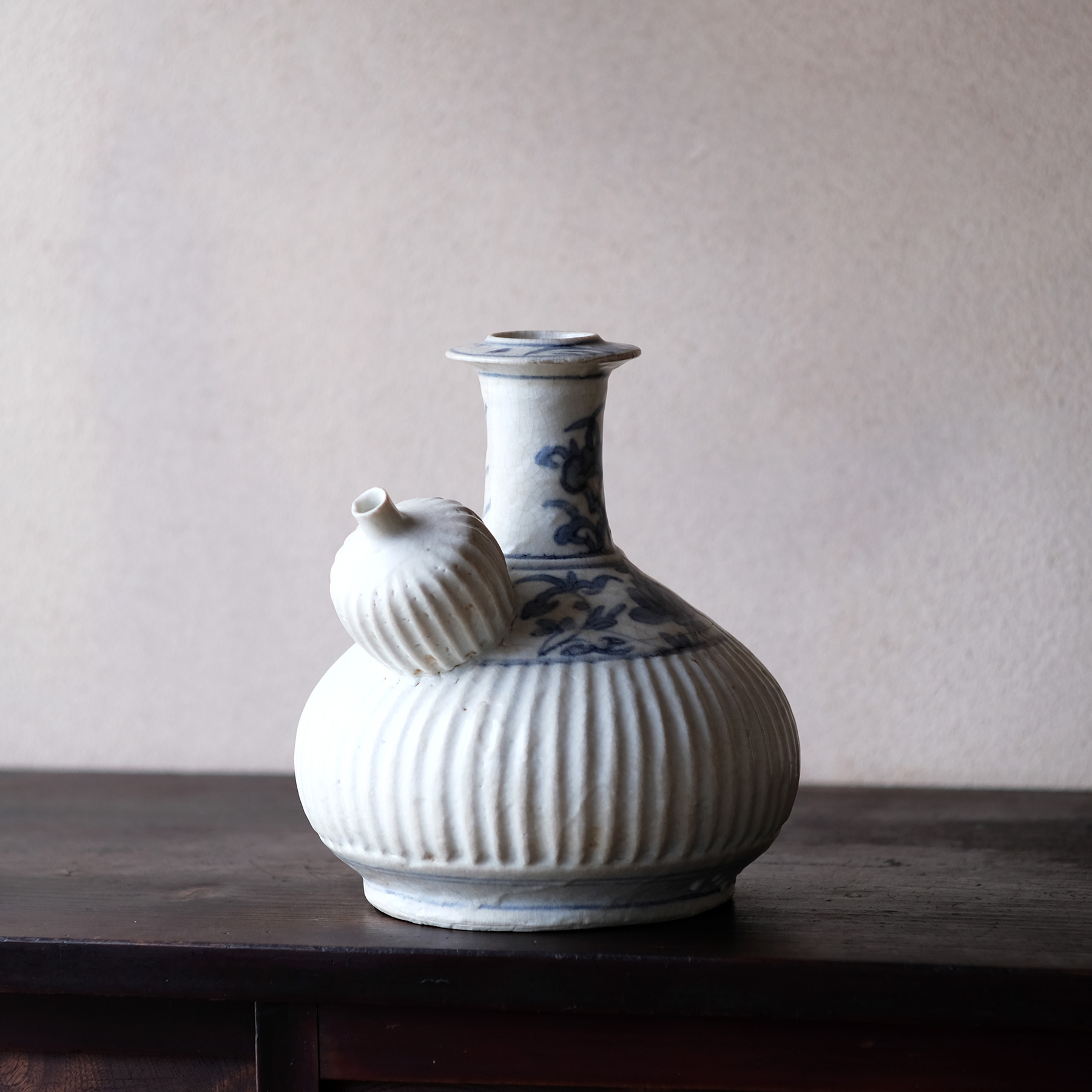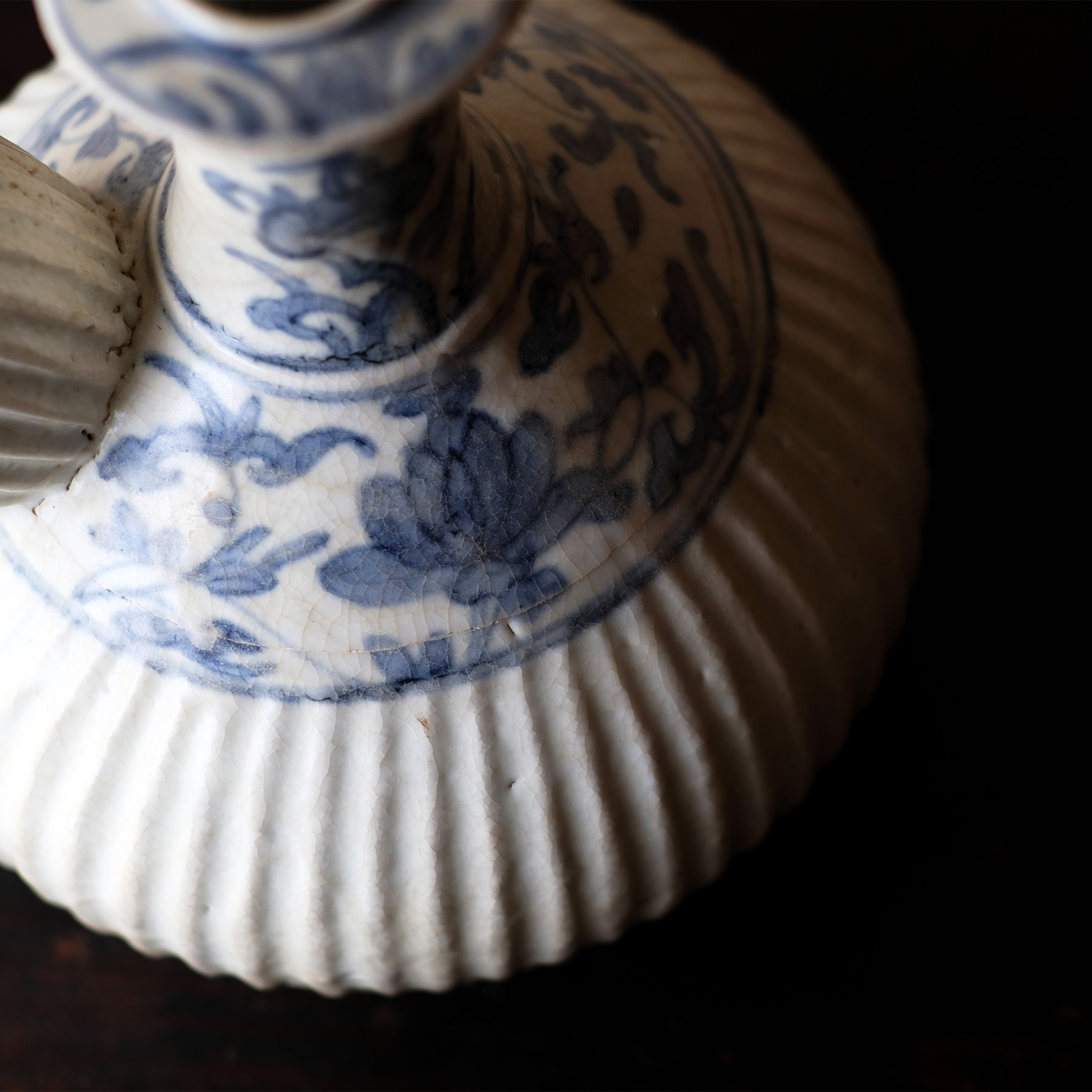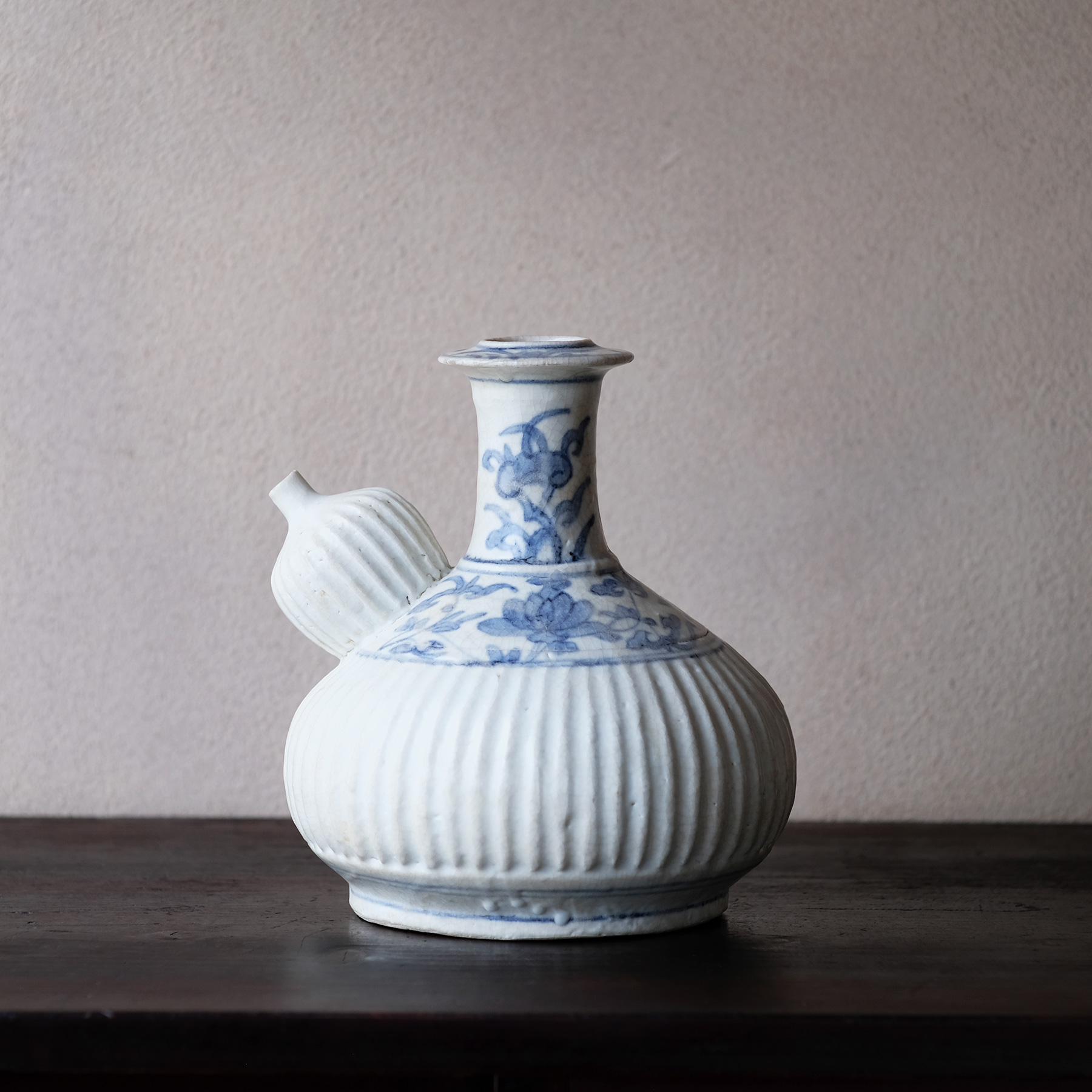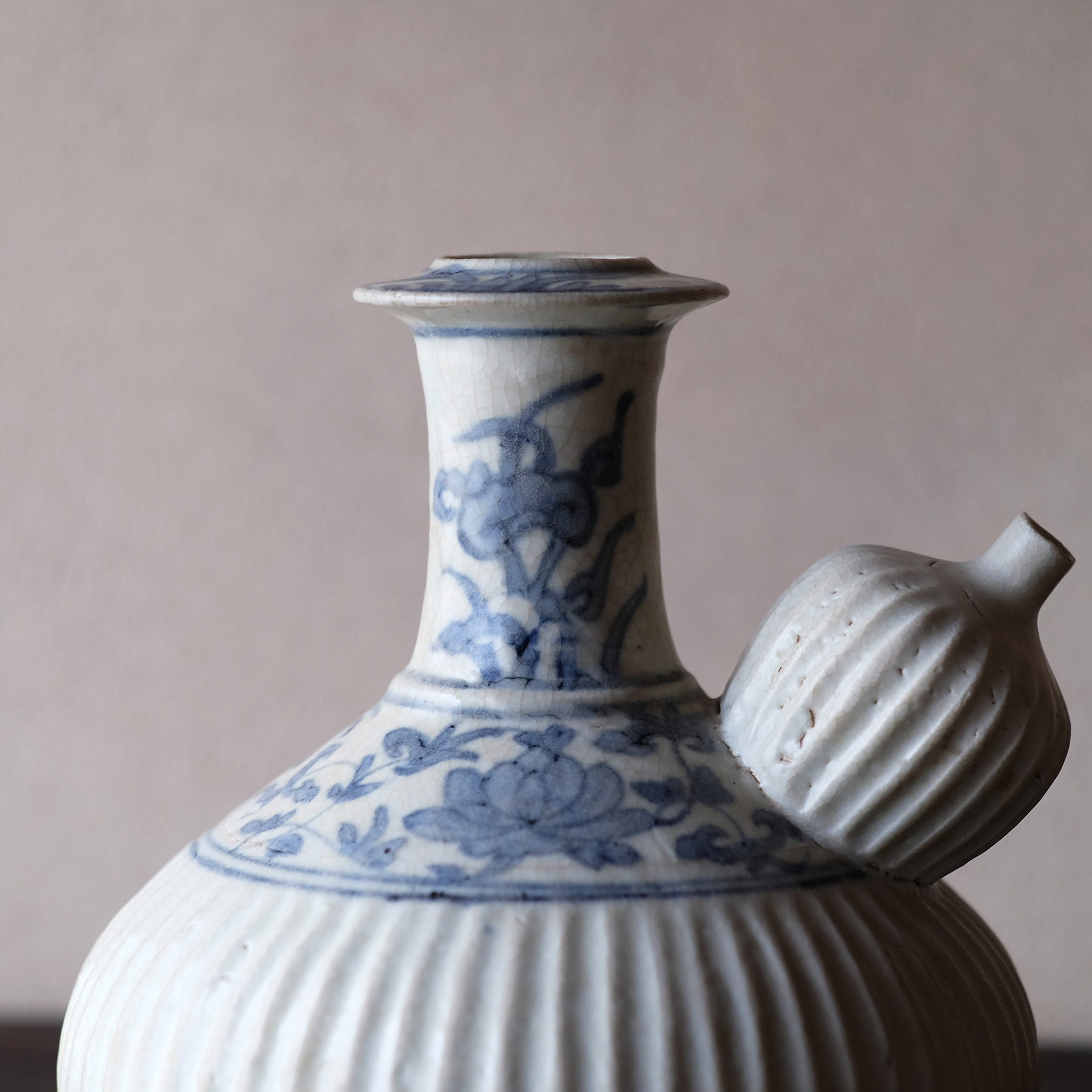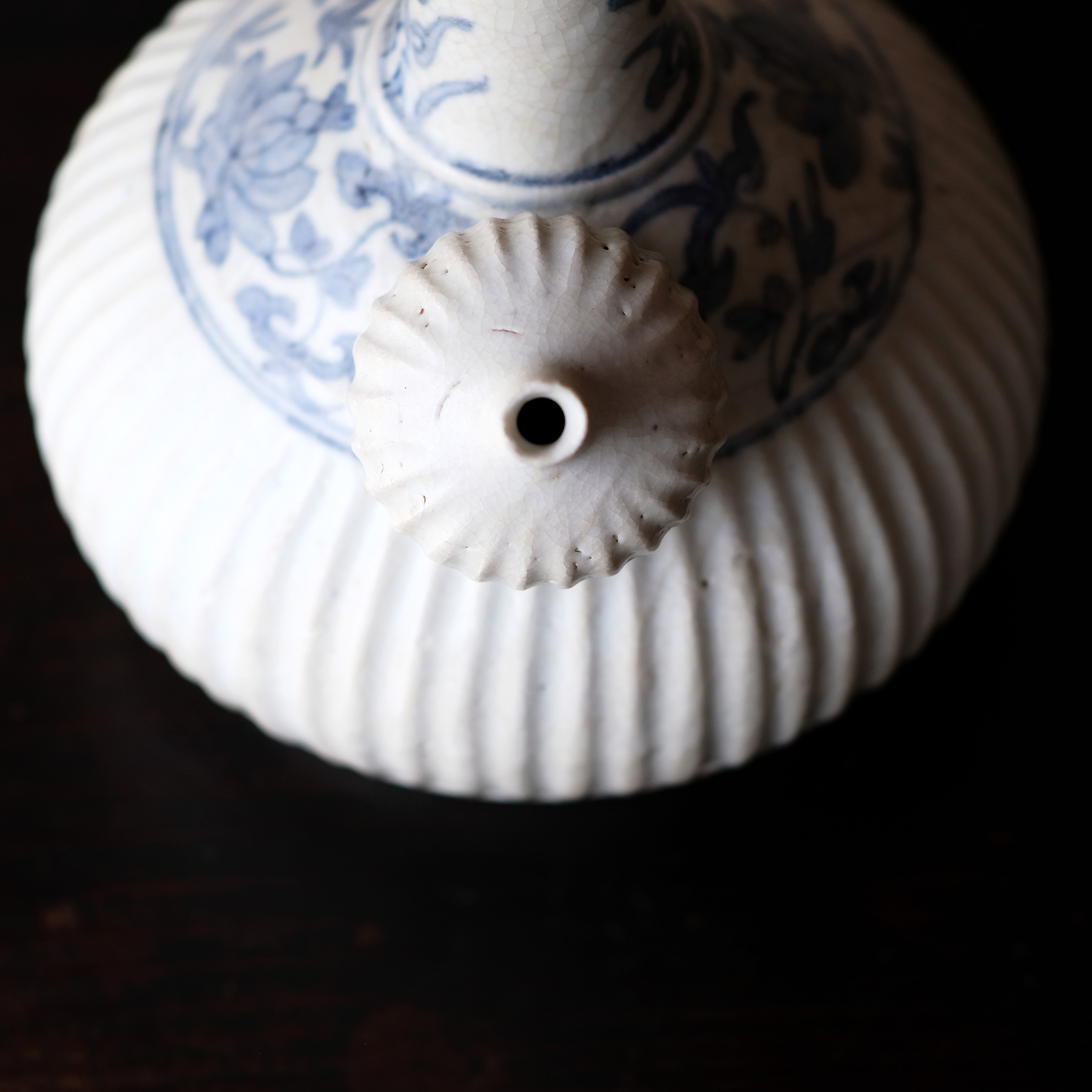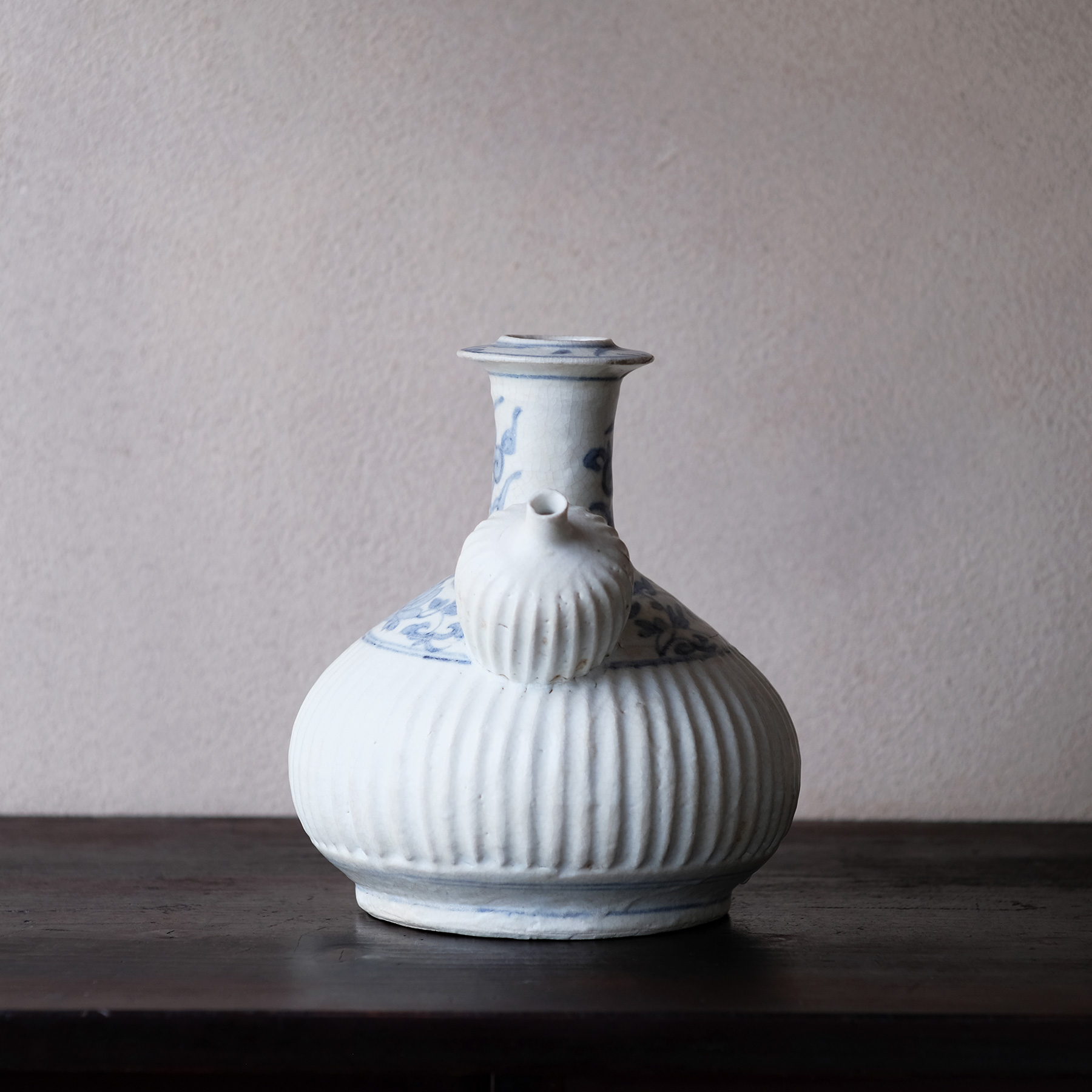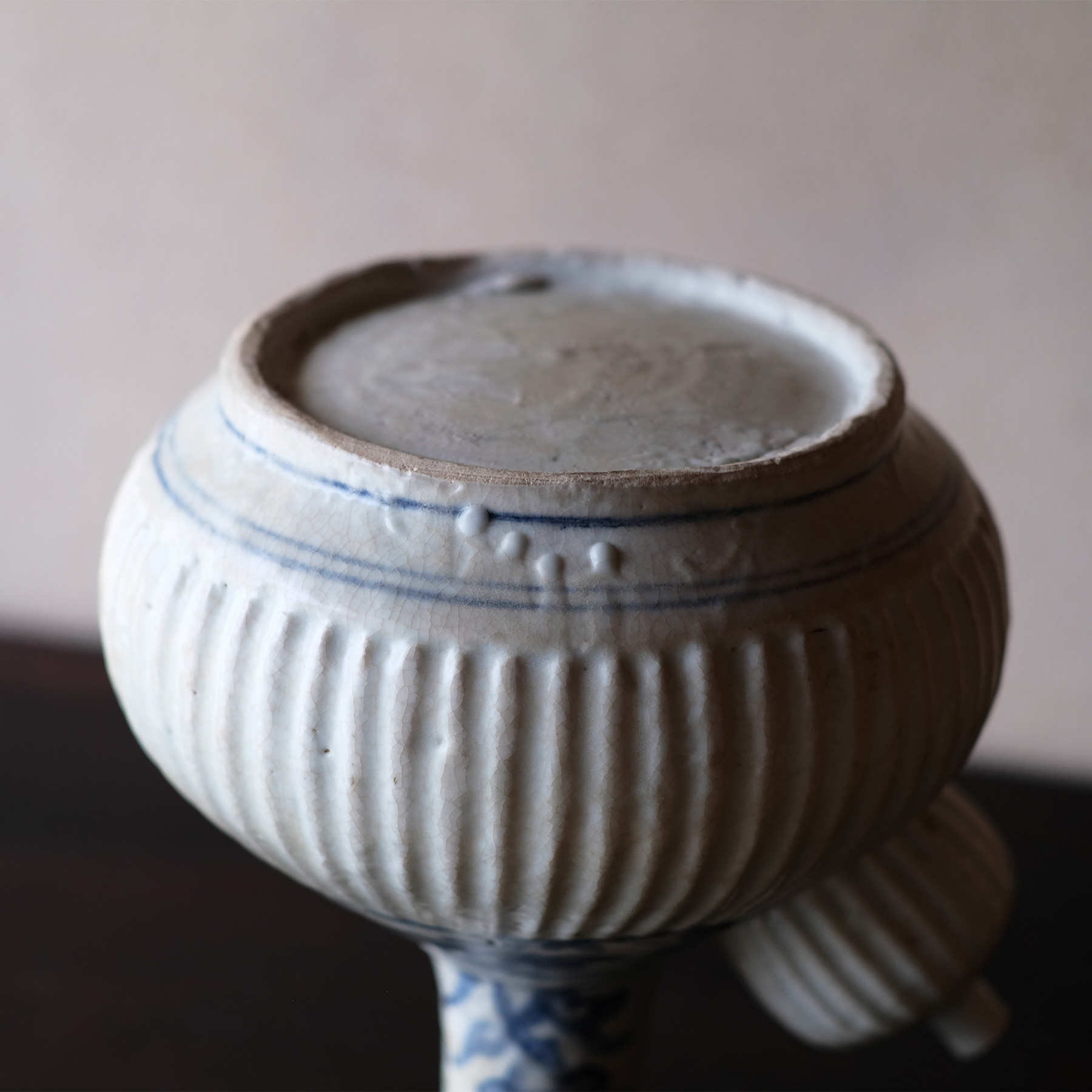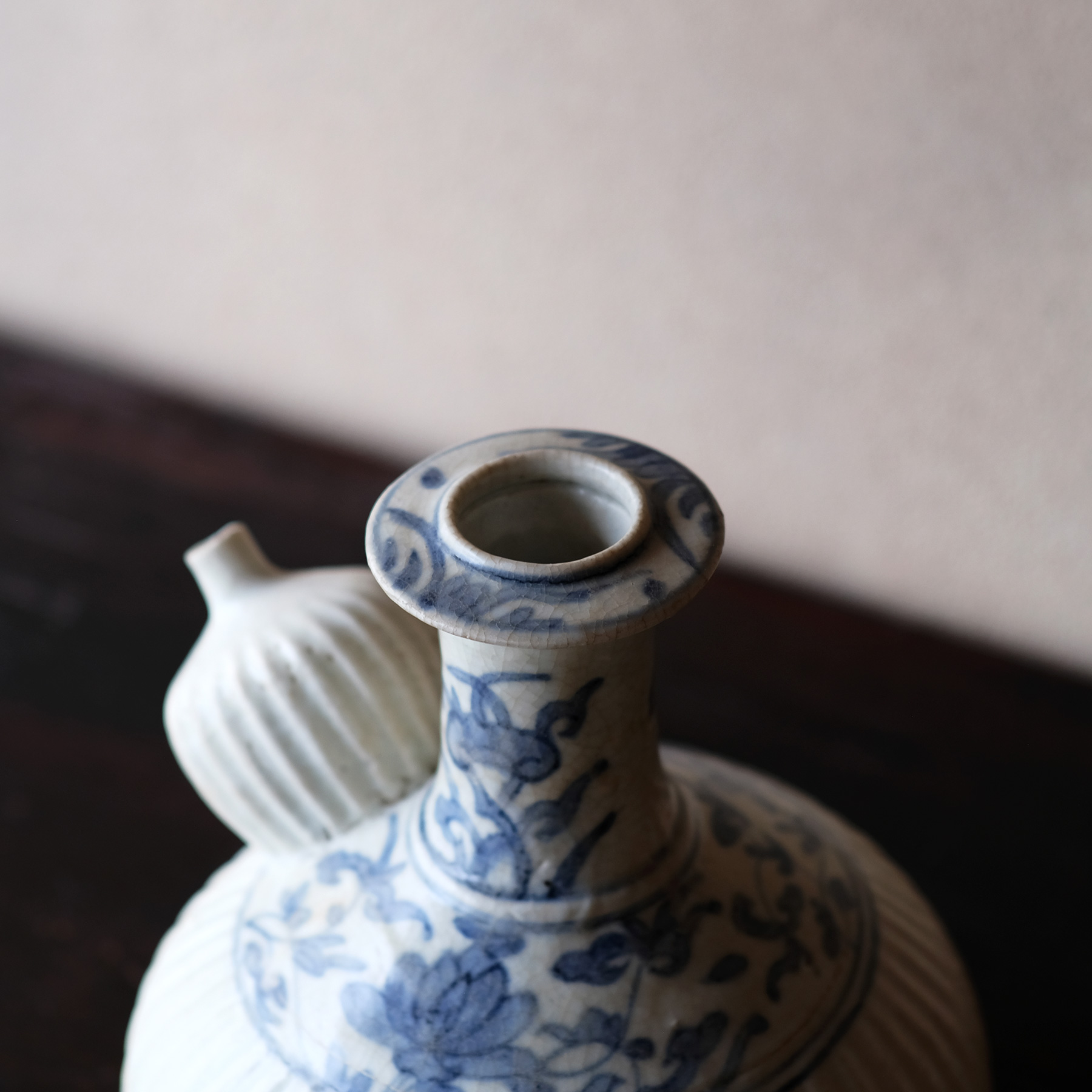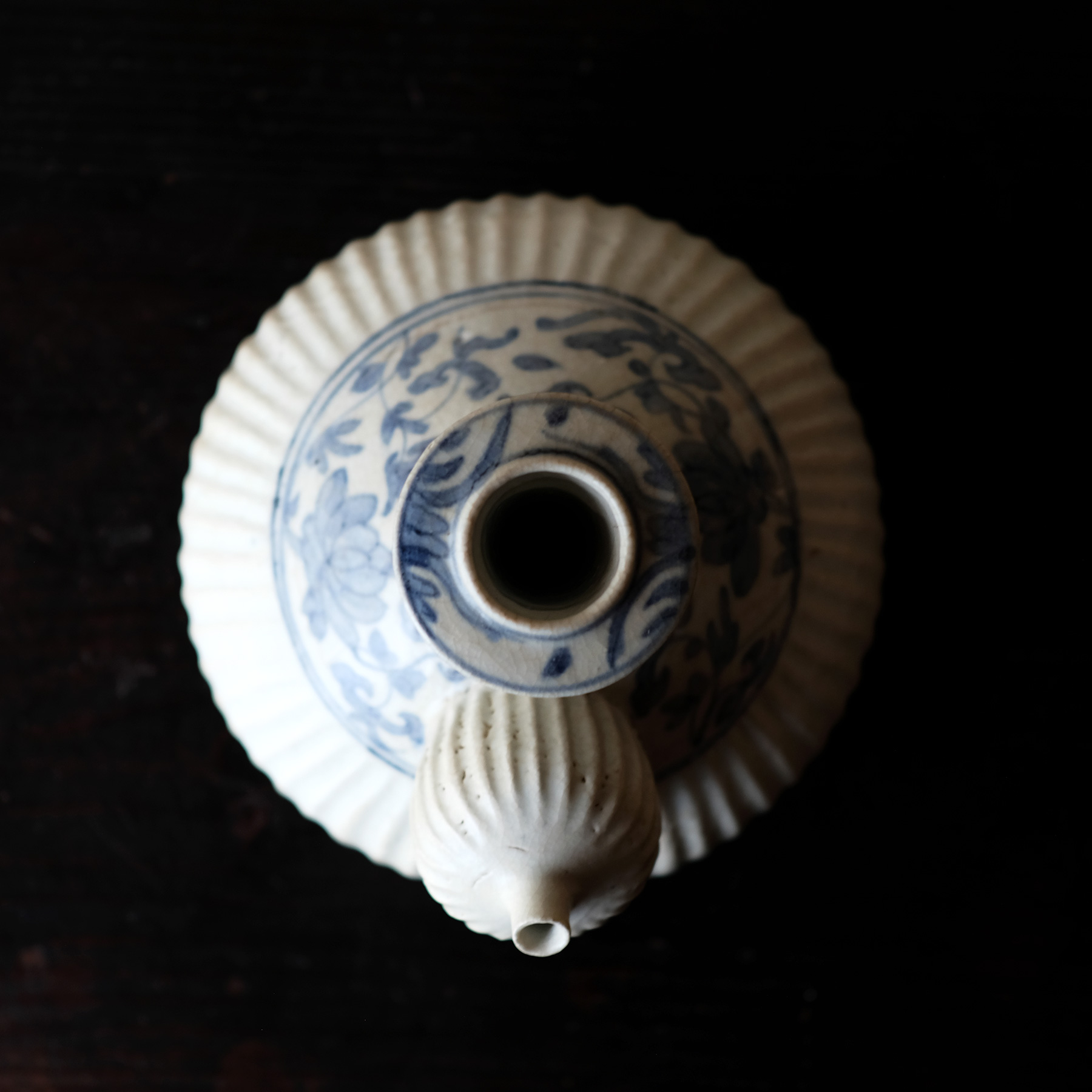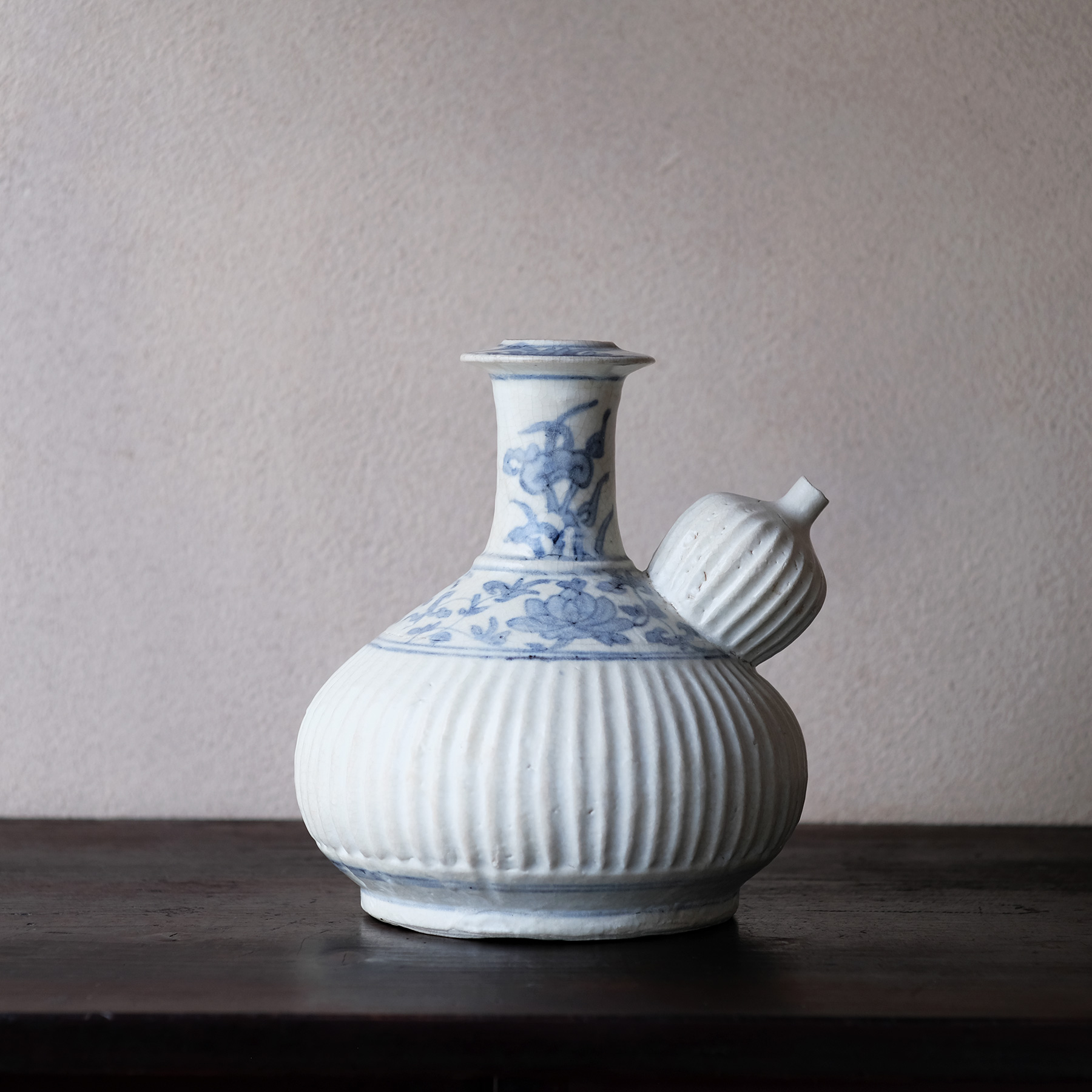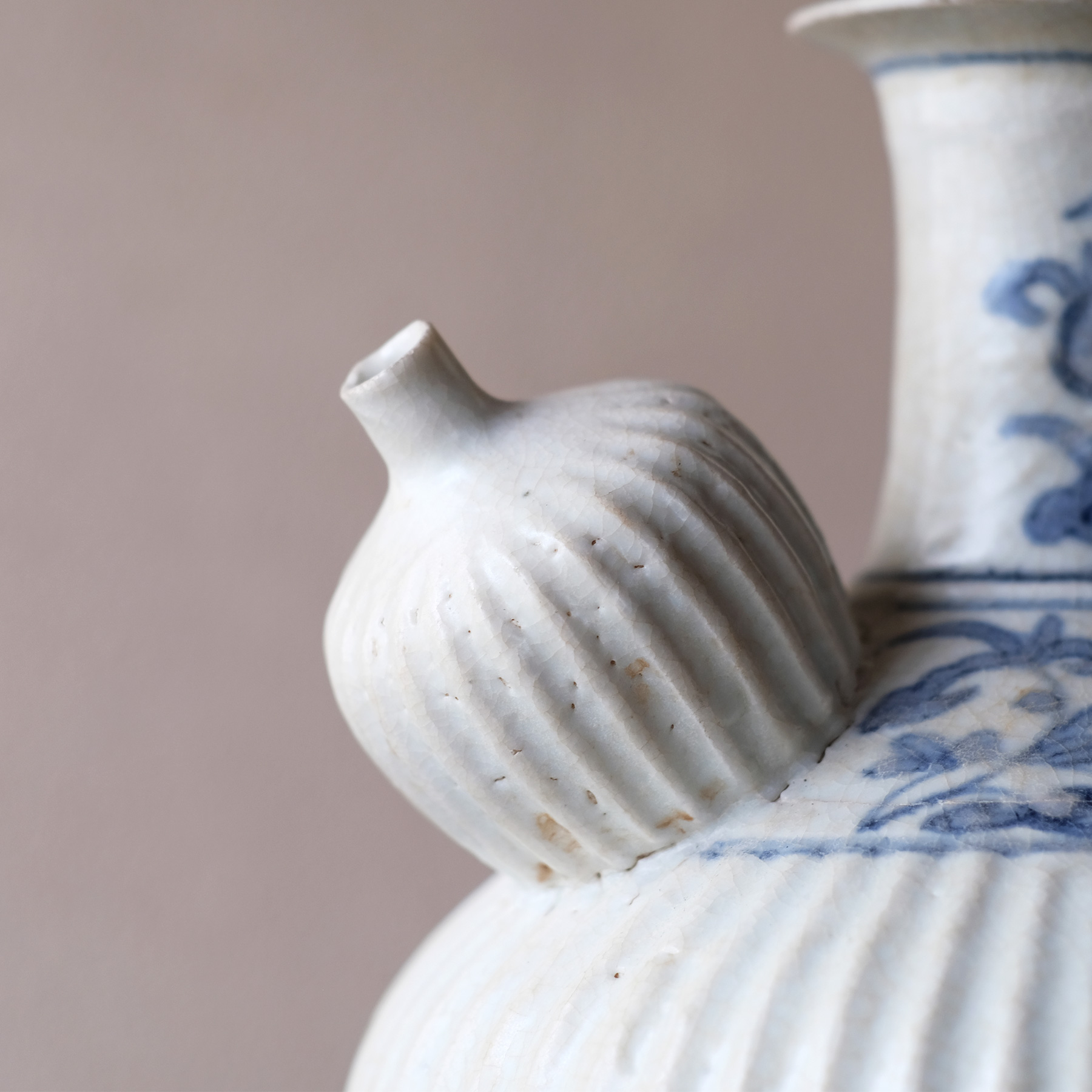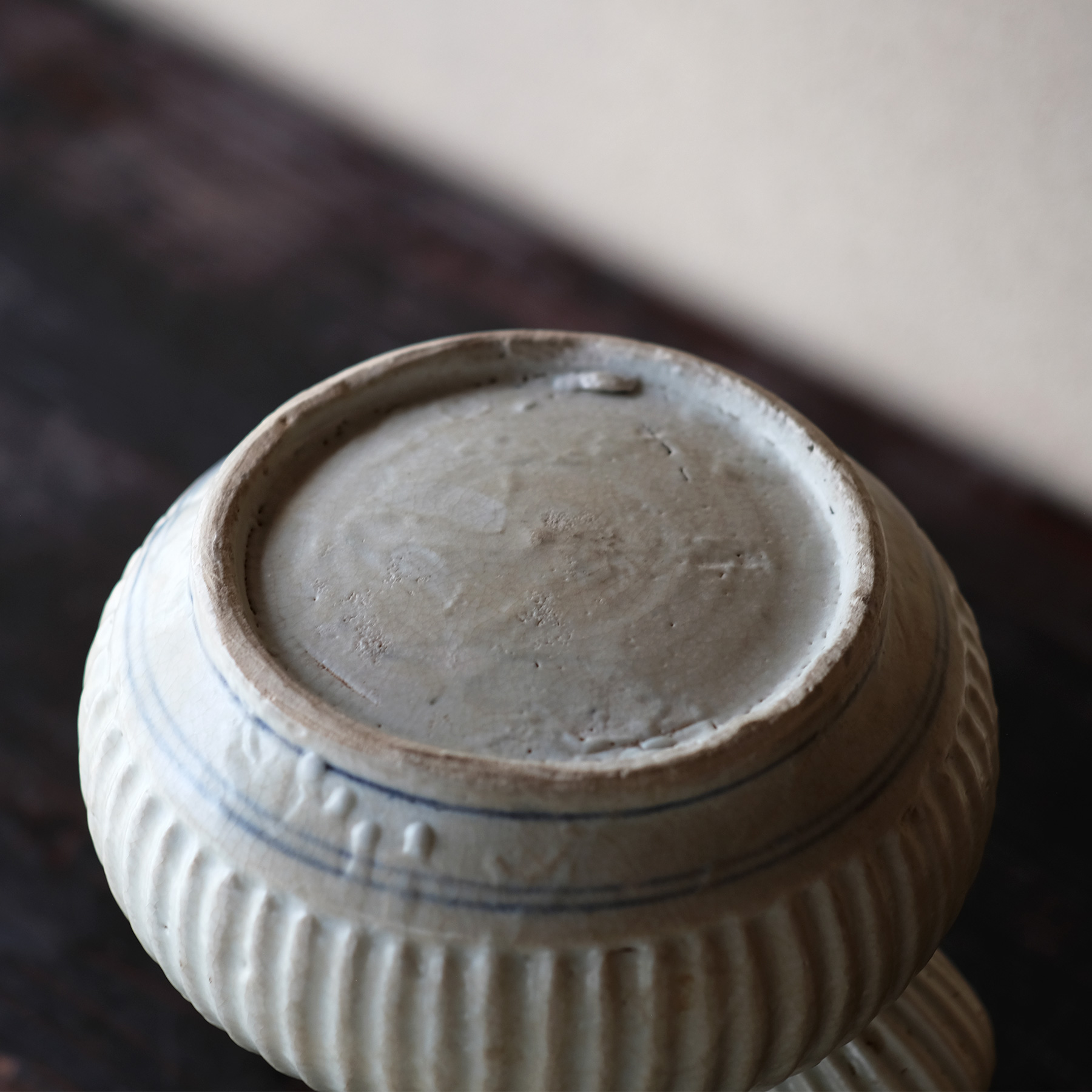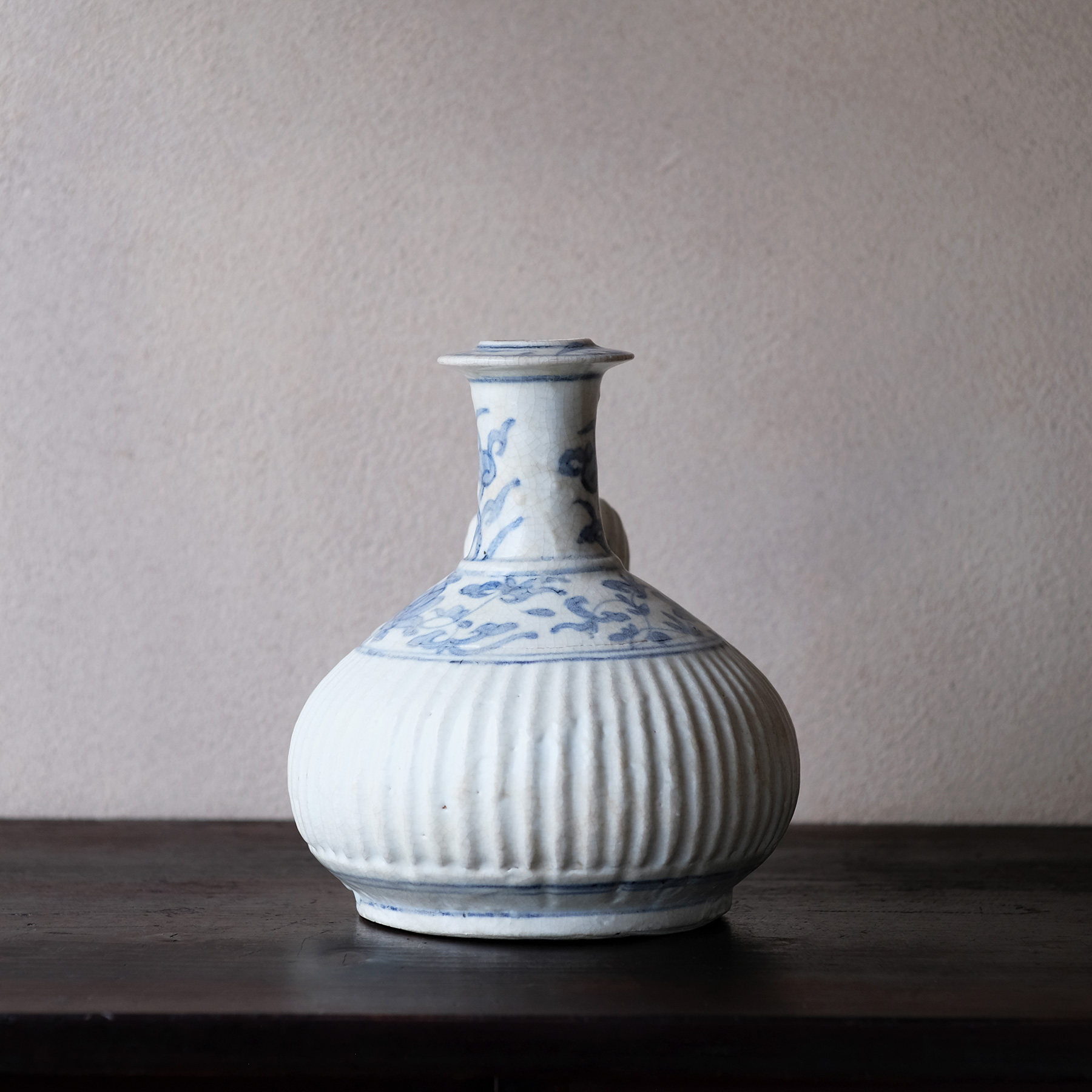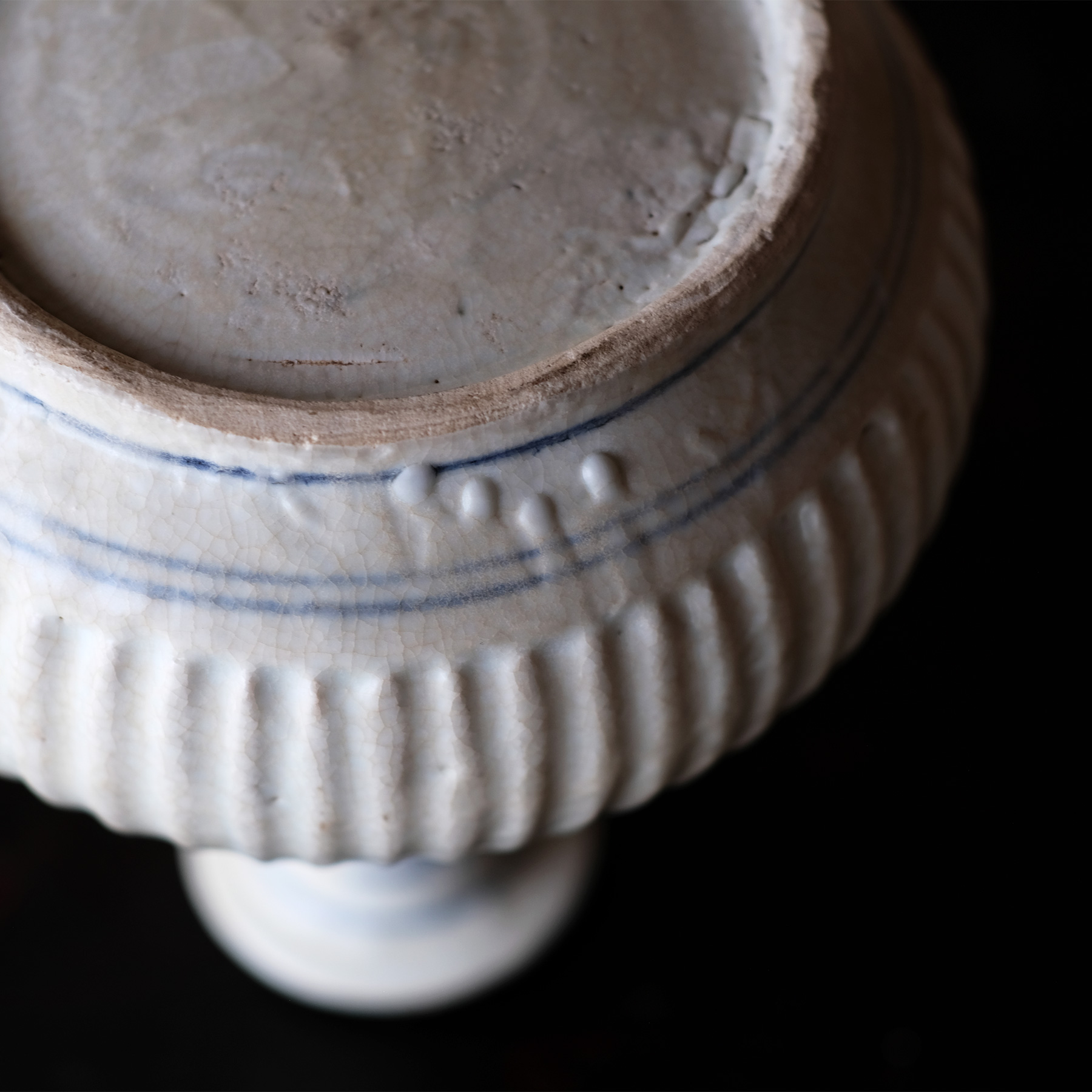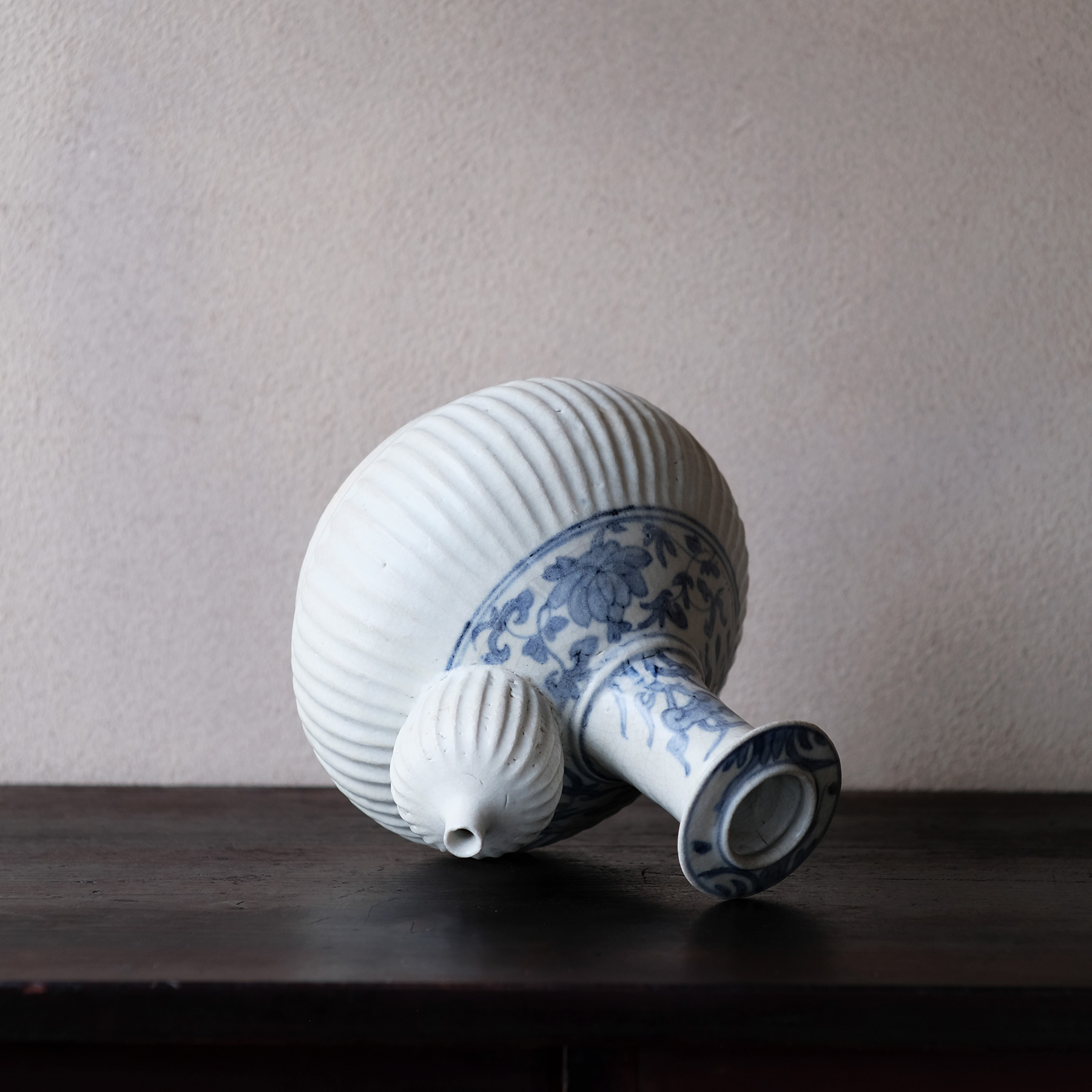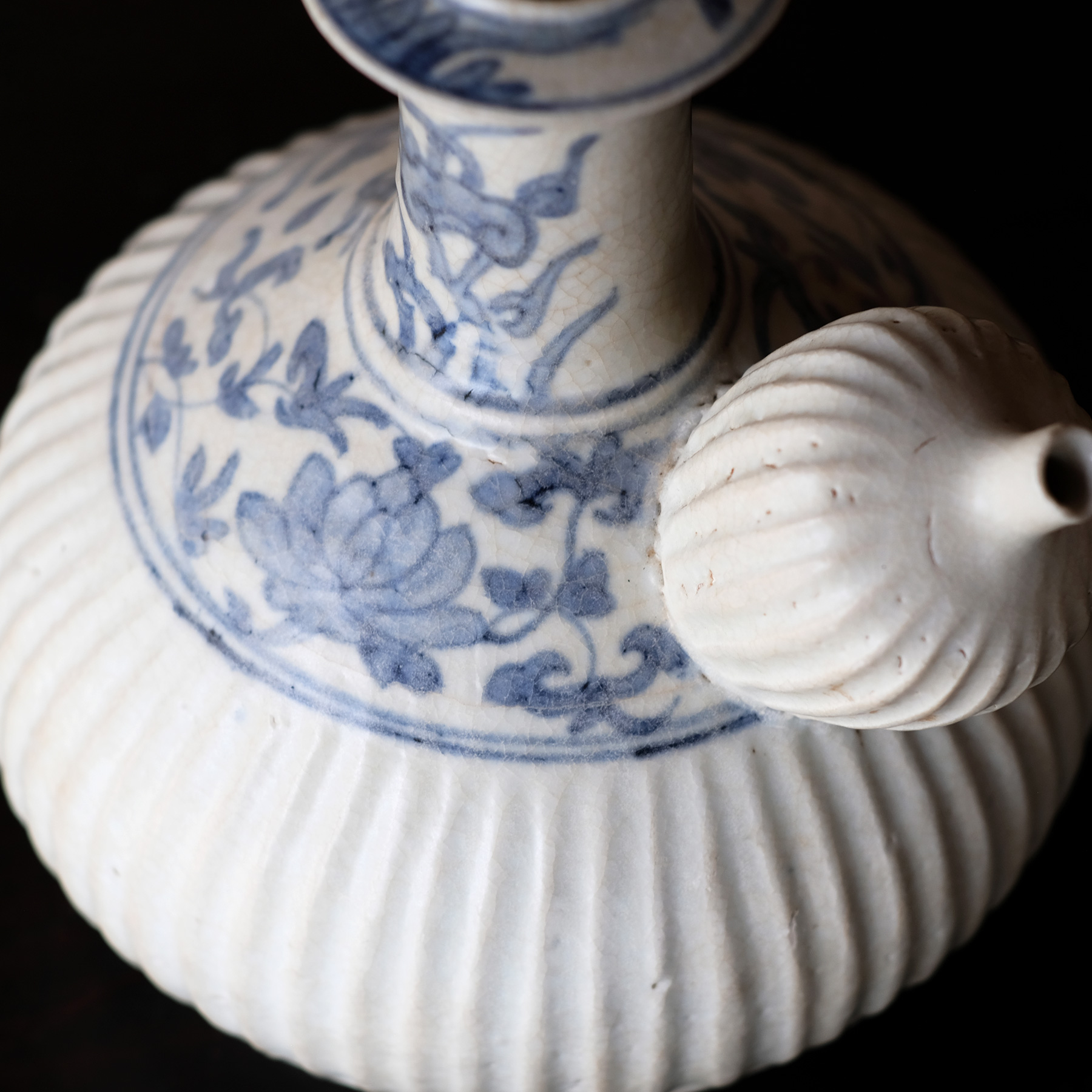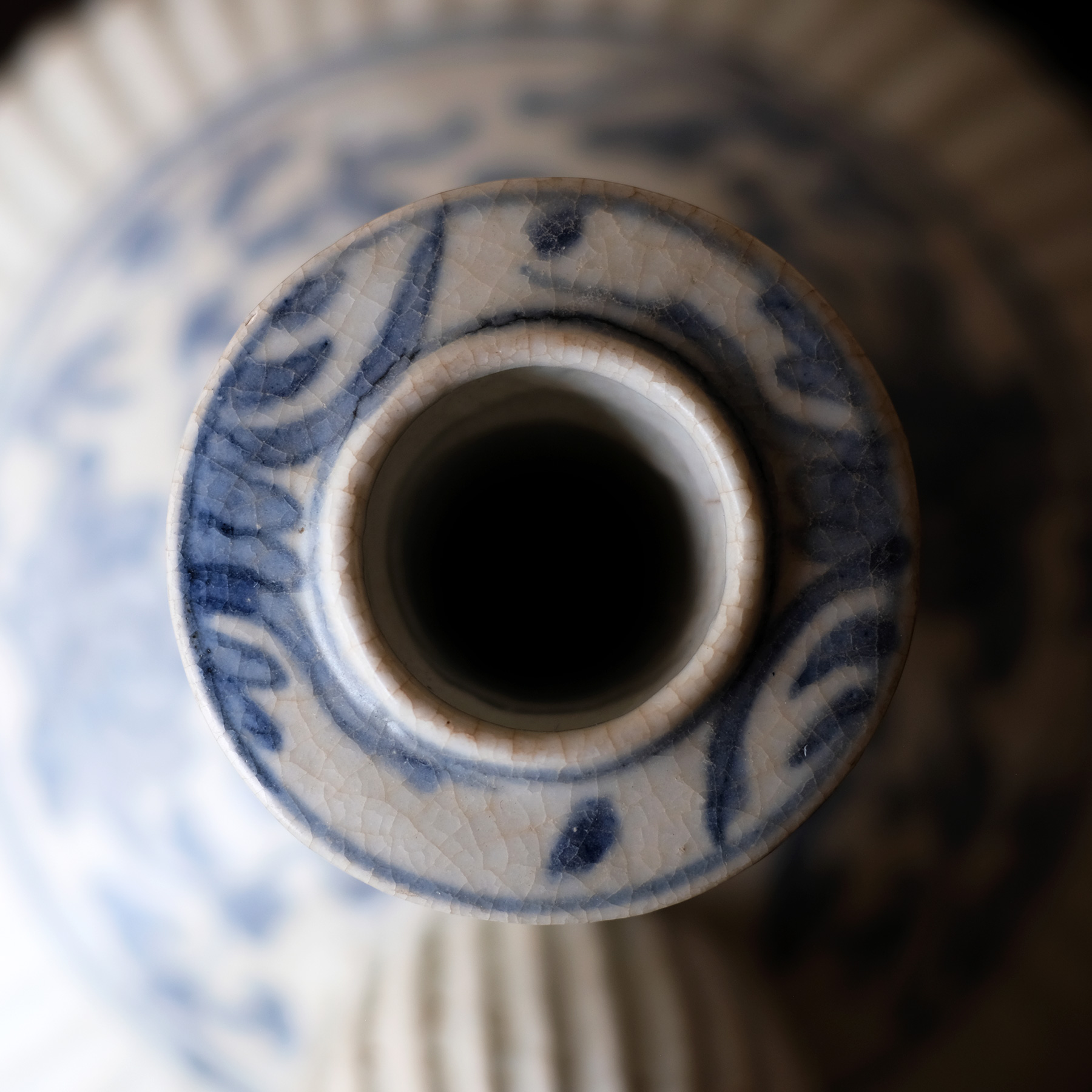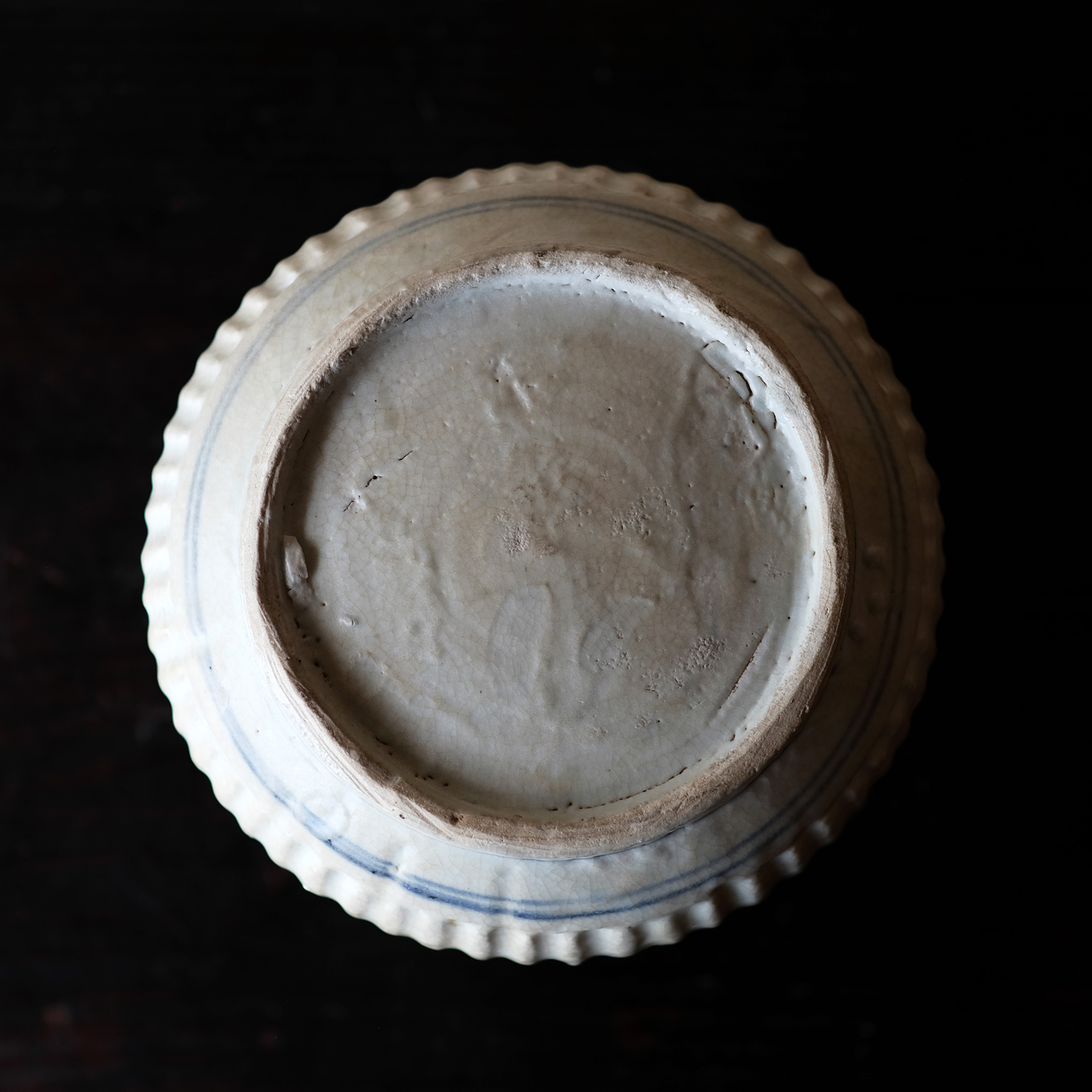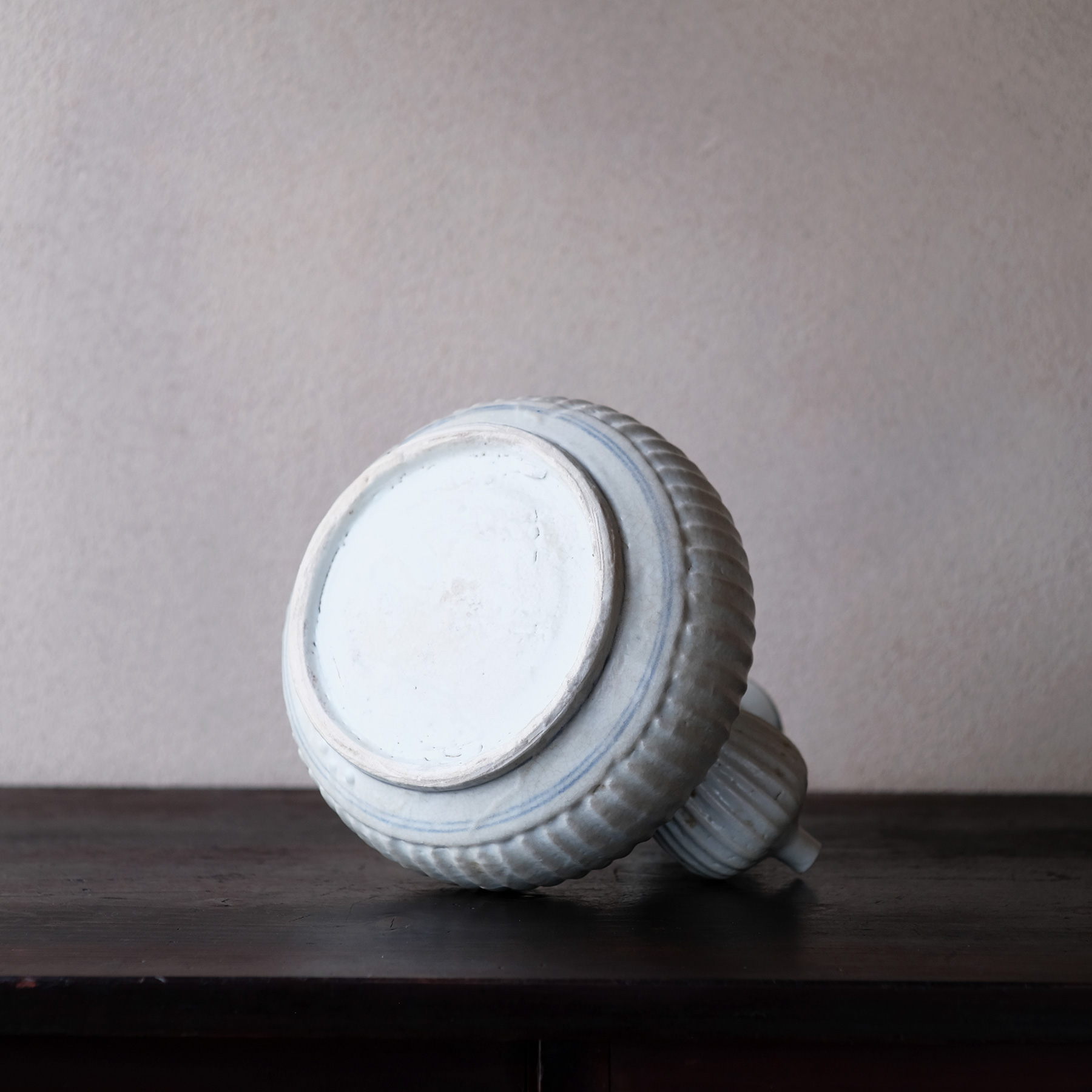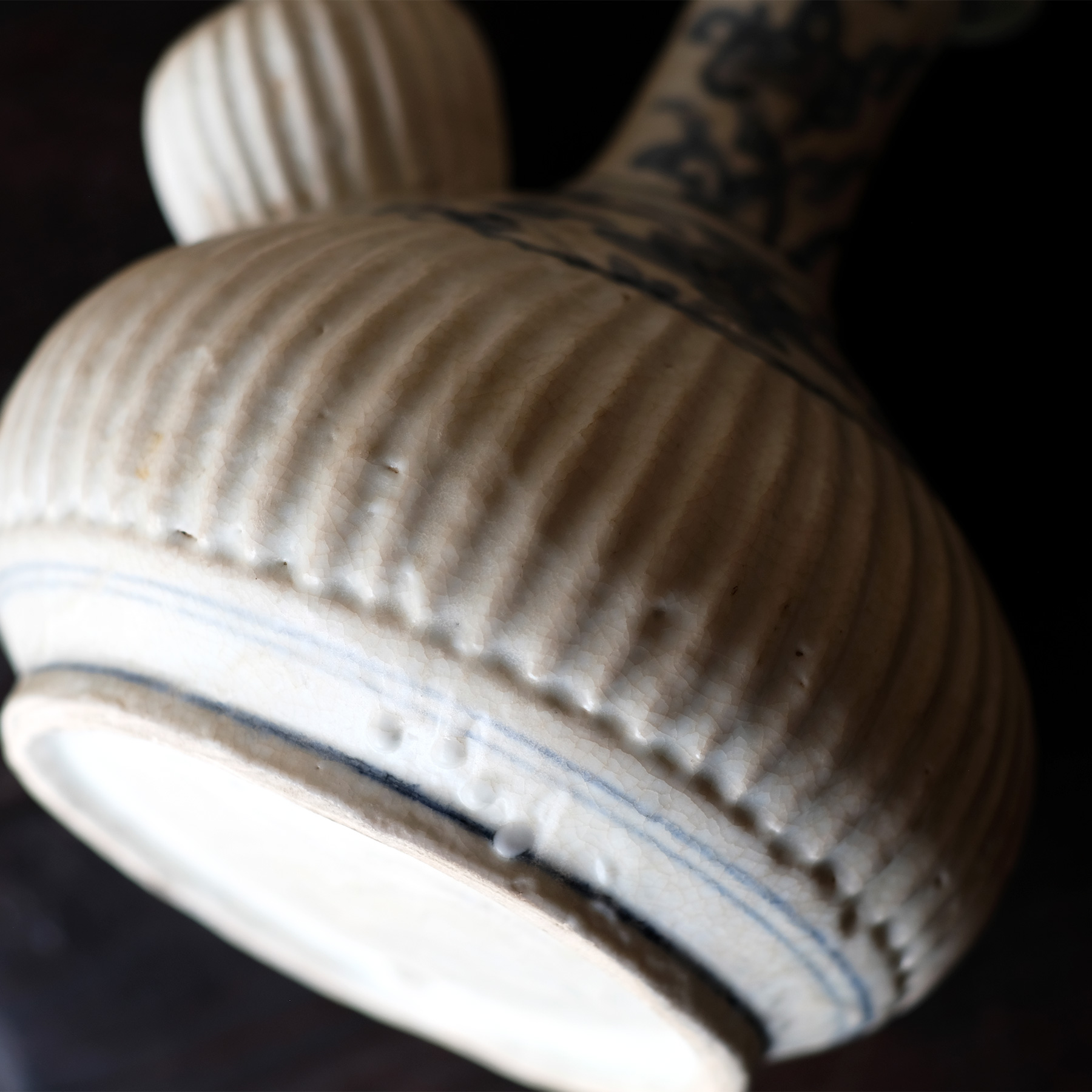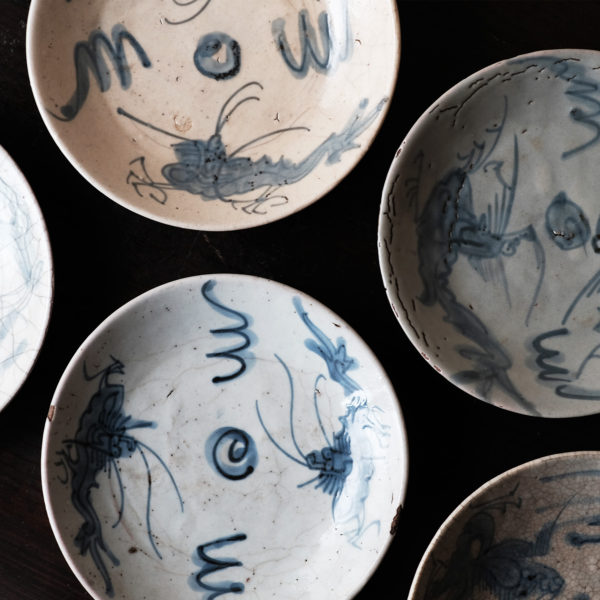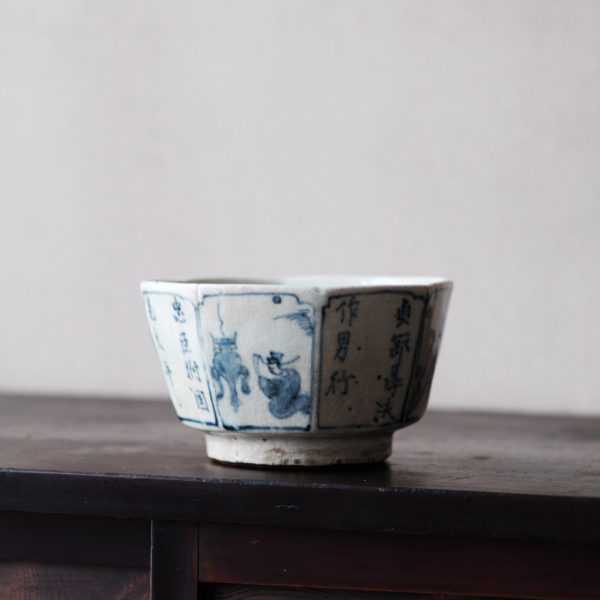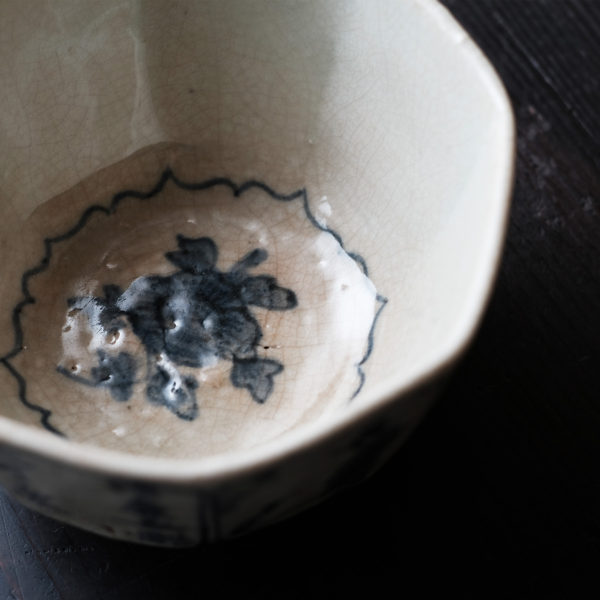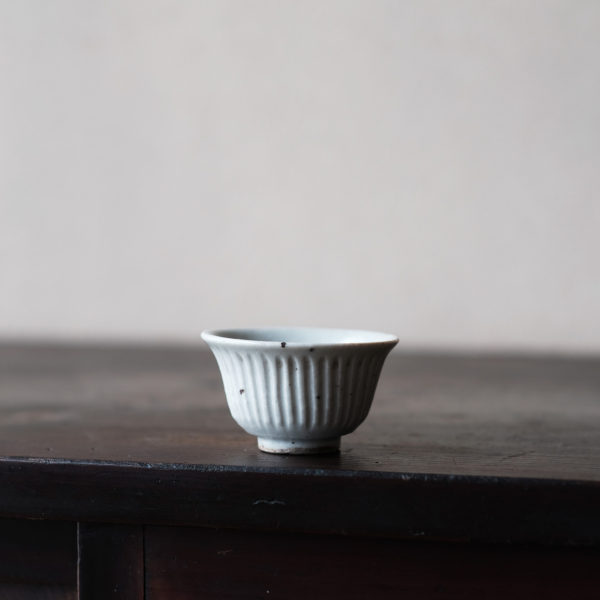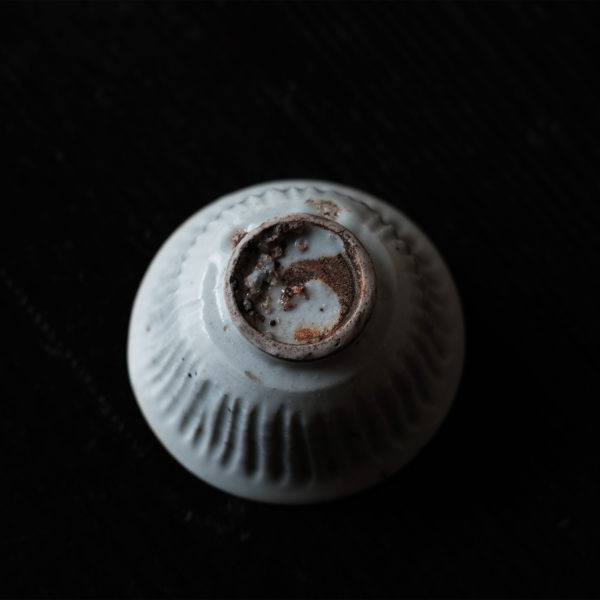Ming Dynasty Swatow Ware Blue and White Porcelain Kendi with Lotus Flower Pattern
ARCHIVEDA Kendi pouring vessel, fired in Zhangzhou kilns during the Ming dynasty, derives its name from Malay. It is shaped like a container to be grasped by the neck or body, lacking a handle. The body and spout feature the characteristic fluted pattern of Zhangzhou kilns, and an underglaze blue lotus pattern is delicately drawn from the shoulder upwards.
Originating in India around the 2nd century, Kendis were functional and utilitarian, used for everyday vessel, as well as for sprinkling holy water in Buddhism and Hinduism, and for ablutions in Islam. The vessels spread with these religions to Southeast Asia. Produced in China as export item since the Tang dynasty and exported to Europe and the Middle East in the Ming dynasty. This piece is probably produced for Southeast Asia considering its pattern. Despite differing vessel types, this Kendi is notably better crafted than the group of Swatow ware, known as “Gosu-de,” found in Japan. The milky white skin of this piece adds an even more gentle and fragile impression to its globular and curvy shape.
The piece exhibits no noticeable defects other than the natural hairline occurring during the kiln process around the shoulder, and it is in good condition. It comes with a storage box.
- The description will be updated as our research progresses.
- Images may differ in color from the actual products.
- Please read "Terms" when purchasing.

